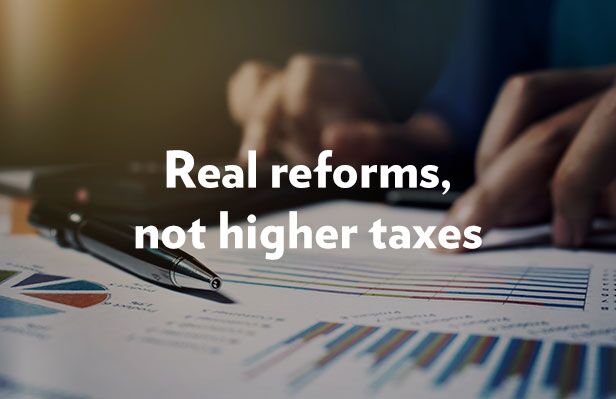Media

Is State Spending “Cut to the Bone”?
One of the justifications Gov. Wolf uses to raise taxes—for the fifth time in nine years—is that state government spending has been relatively restrained. This argument suggests that other than a few “mandatory costs” (mandated by the legislature’s past actions) General Fund spending hasn’t grown much since 2010-11.
These apples are unlike those oranges
Simply focusing on General Fund spending hides spending increases in other accounts. The total operating budget is more than $80 billion, including $4.7 billion in special state funds and $15.3 billion in other state funds.
When examining state spending growth, you have to look at all spending, not just the General Fund. Why? Last June, the legislature and Gov. Wolf moved $95 million in Commonwealth Financing Authority payments off-budget, creating a new reserve account.
Was this a cut is spending? A cut in your taxes? No—it was simply an accounting gimmick to hide the real growth in spending.
Other than that Mrs. Lincoln, how was the play?
If we take out the “Big 4” items in the General Fund budget, then it appears (albeit misleadingly, as pointed out above), that there is minimal growth in “everything else”—about $13 million increase from 2010-11 to 2017-18 enacted.
But here’s the rub: The “Big 4” departments (including proposed mergers)—Corrections, Treasury (debt), Human Services, and K-12 Education (including pensions)—represent a whopping 87 percent of the General Fund budget.
These departments increased an incredible $3.9 billion since 2011—nearly a 17 percent increase!
If you don’t contain the spending growth in the biggest categories of spending, you aren’t containing spending growth.
Bloat on top of bloat
The baseline of comparison—Gov. Rendell’s final budget, for 2010-11—was a bloated monstrosity of overspending. The $28.1 billion budget relied on $3.1 billion in temporary federal stimulus dollars (which disappeared the next year).
The $32 billion spending plan passed in June represents a $4 billion spending increase—nearly $7 billion when you are talking about spending from state tax dollars only. It’s hardly fiscally prudent to tout spending growth over a bloated, unbalanced budget.
Thank you Gov. Corbett
To say that spending on a small fraction of the General Fund budget, excluding shifts to other funds, has been relatively restrained over the past seven years is somewhat accurate. But let’s break that down by governor.
Under Gov. Corbett, the General Fund budget grew by just over $1 billion—including a reduction in his first budget. The increase over the last three years, under Gov. Wolf (excluding shifts) has already exceeded $2.8 billion.
That irresponsible spending has Gov. Wolf demanding lawmakers consider yet another tax hike, after just passing one last year. Indeed, last years’ spending increase alone totaled $1.9 billion, creating a real $1.6 billion budget deficit.
Here’s the harsh reality: If you raise taxes by $650 million, but continue to spend $1.6 billion more than revenue without making reductions to balance the budget; then increase spending in the next budget, without a plan to pay for it; then raise taxes on working families… you aren't “cut to the bone,” you are governing badly.